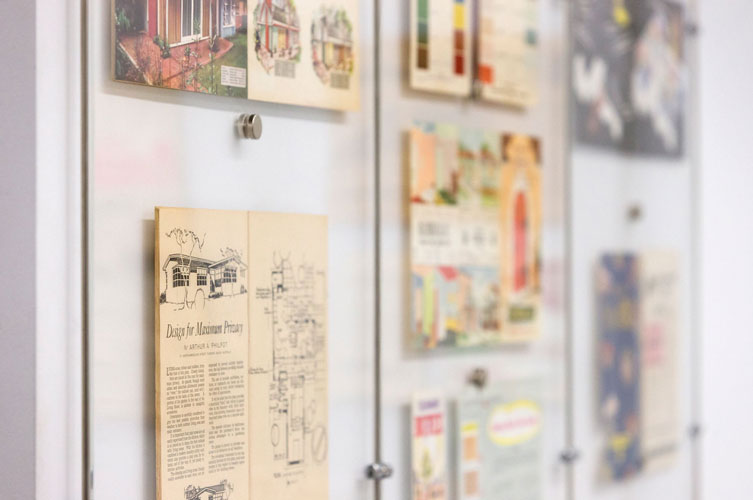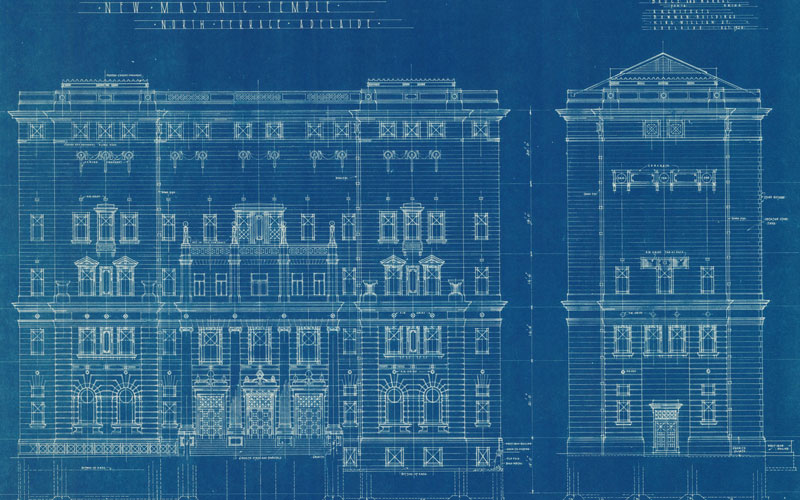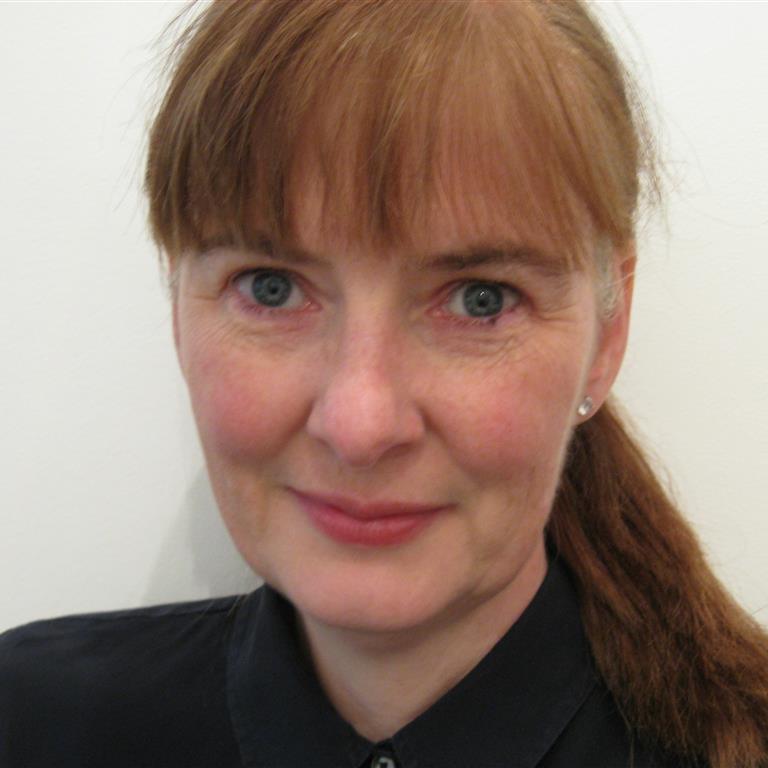Lessons for the future from architecture’s past
“Architecture is built on precedent,” says Dr Julie Collins, architectural historian, curator, and active researcher.
“It involves looking back and seeing what has worked and what hasn’t and building on from those things that have served us well.”
As curator of the University of South Australia's Architecture Museum, Collins is something of a gatekeeper to that precedent.
It is the only architecture museum in Australia that’s dedicated to collecting privately practicing architects’ records, a vast collection of 500,000 items of architectural design documentation, drawings, photographs, artefacts, and ephemera that chart more than a century of the development of South Australia’s built environment.
“It’s not just technical records and documents, which were essential in terms of the growth of the city, but also the cultural and historical records that help us to understand where we’ve come from and potentially where we're going,” says Collins.
Julie Collins

“South Australia has a really strong, innovative culture, and I think the fact that we're holding onto these records, displaying them and using them for research really speaks that we’re ahead of the game.”
The collection which is accessible to the public by appointment contains between 80,000 and 90,000 individual drawings as well as photographs, correspondence, books and pamphlets.
The museum holds regular exhibitions including during the SA History Festival in May each year. It also provides items for display at the ODASA Gallery — the Office for Design and Architecture SA, in Leigh Street, Adelaide.
“We have a really substantial architectural library comprising not just published books but also reports, conservation management plans, trade pamphlets, and catalogues, all of the resources which architects, historians and building owners use to study past developments.”
While the museum’s oldest item is a 1625 book on perspective drawing by Dutch mathematician and engineer Samuel Marolois, its real strength lies in local history.
One of the earliest South Australian related pieces is a work from 1842 by Robert George Thomas, who was the draftsman of the first surveyed plan of the city of Adelaide, and who later became the government architect.
“We have his student work from when he was living in the UK, some stained-glass window designs, beautifully water-coloured as well,” says Collins.
Most of the items cared for in the museum are donated by retired architects or their families after they’ve passed away.
"They generally have a South Australian connection, so there's a geographical focus on South Australia. But we do have many architects’ travel diaries and photographic collections, so we can see how working overseas or interstate has influenced them and impacted on the development of the built environment here.”
The UniSA architecture school started in 1906 when what is now the University of South Australia, was the South Australian School of Mines and Industries.
Most of the collection held by the museum dates from the 20th century, simply because that’s when records really started to be produced in volume and multiple copies were made, so that’s why they’ve survived.

Collins believes Adelaide is fortunate to have some of its built heritage preserved.
“In terms of its city centre and what were the villages, but became the local centres of the suburbs, we have some really enduring architecture,” she says.
“We were building in brick and stone where a lot of other places might have been using timber which didn’t survive. But South Australia didn’t have the timber supplies to build with. The materials we had in the ground were stone from quarries and clay from the pugholes, and so that’s what we used.”
But the museum is not a backward-looking collection. Its major users are architecture students, practising architects, interior architects and designers.
It is a vital resource for current students learning how they might adapt existing buildings to modern uses.
“They come here, look at the original plans for theoretical projects that they’re working on and learn how to adaptively reuse heritage buildings and older buildings.
“It's a really important skill that they're being taught. It's teaching through objects, looking at the drawings and understanding them and going out on site and experiencing the built form is part of that process.”
Collins’ personal favourite piece is a student work by Russell Ellis from the 1930s when he was studying at the school of architecture.
Ellis was one of the early architects in South Australia to design in the Modern style and his work is part of a tradition at the UniSA architecture school that continues until today.
“The water-coloured drawing is a monument to a source of a river in the Beaux-Arts tradition. It's a beautiful work. The drawing and rendering skills that they learnt were wonderful.
“Luckily we still teach hand drawing here. I think it's a really important skill in terms of the translation between mind and hand.”
Collins believes architects both lead trends in the way we live as well as responding to how society develops.
“There are those who are making huge innovations, at the front of the field. You can look at the architects’ awards each year and see those kinds of buildings — breaking-the-mould type buildings and places.
“But architecture is undoubtedly built on precedent, and it does involve looking back to see what's worked and what hasn't and learning from those things that have worked well and have become valued.
“Buildings are designed to make statements about the people or the groups who inhabit or use them. And that's also part of architecture's role. It's not just about being a functional container where the doors are in the right places and which keeps warm or cool at the right times of year, but it has a symbolic function and cultural meaning which is critical to making an architecture which becomes meaningful to the community.”
Profile of UniSA Architecture Museum written by Bill Condie - bill@billcondie.net 0450 952 365
Interested to hear more? Keen to collaborate with UniSA Creative?
Please contact CTV-Research@unisa.edu.au




